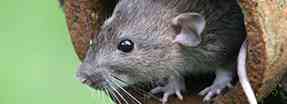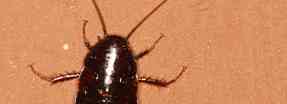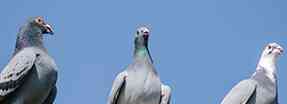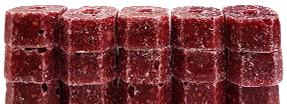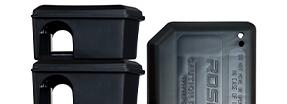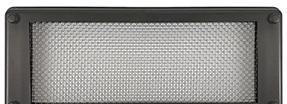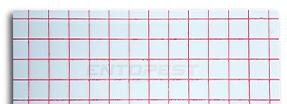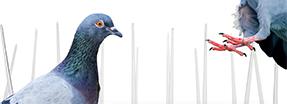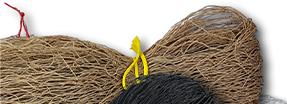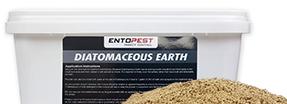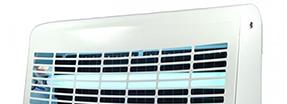
Below are the typical questions and answers that we encounter at ProPest relating to rodenticide use.
Rat poison and mouse poison is the common name for rodenticides. Whilst rodenticide covers treatment against all rodent species, the use of the word within the following is only for the control of brown rats and house mice. Rodenticide should not be used for any other species of rodent.
Rodenticide is a proven method of control; however, it should not be the first approach to treatment, and it should only be used when other alternative treatment methods have not been successful such as using traps or proofing.
The types of rodenticide used now are incredibly effective against rats and mice; especially when compared to first-generation baits such as warfarin which are no longer adequate for rodent control. Recently some baits such as difenacoum and bromadiolone have started to show resistance within the UK, so treatment with the correct active ingredient should always be used.
The best result should always be to prevent the infestation in the first place; of course, this is always easier said than done. Proofing ingress points within a building will likely significantly reduce the initial entry of rodents which then leads to an established infestation; using proofing grills around air bricks, proofing paste or mesh to gaps and rodent flaps to sewer pipes will likely suffice.
Choosing the type of bait formulation will vary depending on your location; whilst rats and mice will attempt to consume anything they find, they can also often be fussy, especially when baiting within areas of competing food sources. Often a trial-and-error approach has to be undertaken.
Blocks are an ideal solution for treating rodents in external or damp environments as the wax contents provide a layer of protection against fungi; this bait can also be safely inserted onto rods to prevent spillage, which can otherwise be an issue.
Pasta is a high-calorie alternative to blocks and an appropriate solution for baiting within towns or areas of other food sources; this type of formulation is especially when treating mice within buildings that can often be problematic.
Wheat is a universal and often best approach to treating rodent infestations; wheat is often accepted and consumed quickly. Wheat is liable to spill and can be quickly damaged if placed within damp environments.
The active ingredient within rat and mouse poison is crucial when choosing which bait should be used. In the UK, we have three approved products that are principally allowed to be used against rats and mice. difenacoum, bromadiolone and >brodifacoum. Whilst they are principally the same in style, some work better against some rodents than others.
Difenacoum: This is a second-generation multi-feed rodenticide for controlling both rats and mice; this product works better for mice and should be used as the initial product for their control. Difenacoum is a safer rodenticide for use around dogs; steps should still be taken to prevent non-target access. Resistance has been recorded for this product, so we advise you to check the below RRAC resistance map before undertaking a treatment.
Bromadiolone: Similar to the above, bromadiolone is a second-generation multi-feed rodenticide for controlling both rats and mice; this rodenticide has been proven to be particularly good for controlling rats but will also control mouse infestations. The properties of bromadiolone mean that it's more toxic to non-target animals, so care must be used when baiting around non-target animals. Resistance has been recorded for this product, so we advise you to check the below RRAC resistance map before undertaking a treatment.
Brodifacoum: This is a single-feed rodenticide; meaning that rats and mice only need to consume a small amount of feed before they die; extreme care must be undertaken to prevent non-target animals as this rodenticide can be highly toxic. Brodifacoum should only be used within areas of known resistance of difenacoum or bromadiolone or when dealing with stubborn infestations; for best results, use this product as a last resort.
The amount of rodenticide required will vary depending on several factors, including the size of the population, location and what the rodents are feeding on. Sadly there is no direct and easy answer. Some areas of the UK have known resistance to rodenticides so the correct active ingredient must be used for the best results.
As a general rule of thumb, we recommend initially placing about 100-150g of product for the control of mice and 250-300g for rats; once the bait has been consumed, the amount should be replenished until no further activity is observed. The speed of consumption can be an indicator of the size of an infestation; fast acceptance may suggest competing numbers indicating a larger-than-expected population.
It is not uncommon for rats to consume considerably more bait than expected, especially in larger-than-expected infestations such as on farms or within sewers.
All rodenticides must be used with caution; it is a legal responsibility for amateur users to use an appropriate tamper-resistant bait station with all rodenticide baits.
Using a tamper-resistant bait station prevents larger animals and children from gaining access to the internal products; however, it is still a device that should be used with caution as poison bait can be removed by rats from the internal chambers if not placed correctly. Rat bait stations include a bait rod that helps users to hold rodenticide within boxes and minimises the risks of bait spillage.
Additional steps should be taken to minimise the risk of using rodenticides, including attaching the box to walls to prevent accidental tipping of the box or when in cases of baiting around large dogs or within public areas, using a more impenetrable metal bait station.
Whenever rodenticide bait is used, it is essential to monitor the treatment area regularly and remove spilt bait or rodent carcasses as soon as possible.
Using the correct active ingredient is also essential if baiting around animals; difenacoum is a viable, less risky and the least harmful option to non-target animals compared to brodifacoum, where only a minimal and single feed can be fatal. See the question: What active ingredient do I use?
You should take your dog immediately to the vet; if possible, take the packaging of the rodenticide as this will have clear information about the active ingredient; also we recommend viewing our data sheet page for the latest MSDS, a document that a vet will find helpful.
Whilst all rodenticides can be harmful to dogs, brodifacoum is considerably more toxic than difenacoum, and any suspected take should be taken with the utmost priority.
Of course, any remaining loose bait must be removed promptly to prevent other animals from gaining access. We always stress that any rodenticide must be used within tamper-resistant bait stations; this is a legal requirement that should always be complied with.

